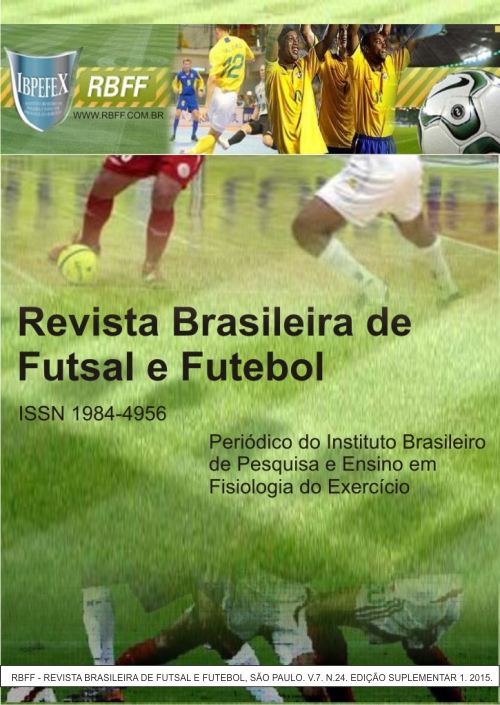Professional profile of goalkeepers preparers participants of clubs championship series paulista A2 2014 and the most training methods used in relation to new trends for preparing goalkeepers
Abstract
The present study aimed to gather information, analyze and profile these professionals, as well identify what are the most commonly used training methods. A questionnaire adapted from Rigotti (2006) and Max (2012) model, this consists of objective questions on socioeconomic, family and work issues, was used. The sample consisted of seventeen goalkeeping coaches of professional football teams in the state of São Paulo, the participants of the Championship Series A2 in 2014. From this study we found that 64.71% of these workers are married, aged between 28 and 56 years old, and 76.47% have children. It was found that only 23.53% of them have a college education degree. It was possible to verify that all goalkeepers were previously and currently work only with goalkeepers the main category, with 41.18% interviewed performs this function goalkeeping coach for over 10 years. All goalkeeping coaches, 100% agreed that obtaining scientific knowledge is essential for the proper performance of their function and seeking professional improvement, while 41.18% chose the survey as the primary means to this. It was observed that 82.35% of the trainers are satisfied with their salary, with the most of them, 94.12% receive between 4-6 minimum wages and 47.05% reported having optimum conditions in their clubs. We found that 47.05% of goalkeeping coaches are logged in CREF - Regional Council of Physical Education. As for training methods most used along with their goalkeepers, it was found that 82.35% of goalkeepers' coaches adopt the global method, while none of them have used the new trends of preparation of goalkeeping coaches in their training.
References
-Abelha, J. B. L. Treinamento de goleiro: técnico e físico. São Paulo. Ícone. 1999.
-Aquino, R. S. L. Futebol, uma paixão nacional. Rio de Janeiro. Jorge Zahar. 2002.
-Carlesso, R. A. Manual de treinamento de goleiro. Rio de Janeiro. Palestra. 1981.
-Koche, J.C. Fundamentos de Metodologia Científica: teoria da ciência e prática da pesquisa. 19ªedição. Vozes. 2001.
-Martins, E. A. Nova tendência em treinamento de goleiro: um estudo de caso com o Paulínia Futebol Clube. TCC. Faculdades Integradas Metropolitanas de Campinas-METROCAMP. Campinas. 2007.
-Máximo, A. S. Perfil dos preparadores de goleiro de futebol de campo em clubes profissionais da cidade de Florianópolis (Categoria de Base). TCC em Bacharelado em Educação Física. Centro de Desportos Departamento de Educação Física. Universidade Federal de Santa Catarina. 2012.
-Morin, E. Os sete saberes necessários à educação do futuro. 2ª edição. São Paulo: Cortez. Brasília: UNESCO. 2000
-Oliveira, R. Psicomotricidade e preparação de goleiros: o treinamento de ontem e de hoje. 2004.
-Rigoti, S. R. Perfil dos treinadores de goleiros dos clubes de futebol da série “A1” do Campeonato Catarinense de 2005. TCC de Bacharelado em Educação Física e Esporte. Centro de Educação Física, Fisioterapia e Desportos. Universidade do Estado de Santa Catarina. 2005.
-Scaglia, A. O inato e o adquirido: questões relativas à altura dos goleiros. In: Universidade do Futebol. 2007.
Authors who publish in this journal agree to the following terms:
- Authors retain the copyright and grant the journal the right of first publication, with work simultaneously licensed under the Creative Commons Attribution License BY-NC which allows the sharing of the work with acknowledgment of the authorship of the work and initial publication in this journal.
- Authors are authorized to enter into additional contracts separately for non-exclusive distribution of the version of the work published in this journal (eg, publishing in institutional repository or book chapter), with acknowledgment of authorship and initial publication in this journal.
- Authors are allowed and encouraged to post and distribute their work online (eg, in institutional repositories or on their personal page) at any point before or during the editorial process, as this can bring about productive change as well as increase impact and impact. citation of published work (See The Effect of Free Access).





